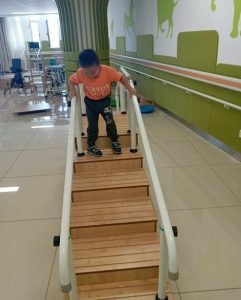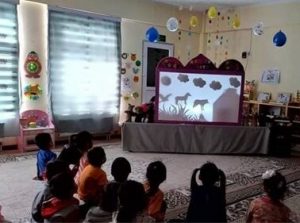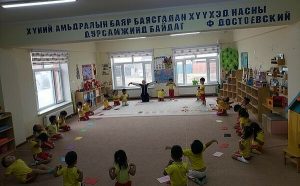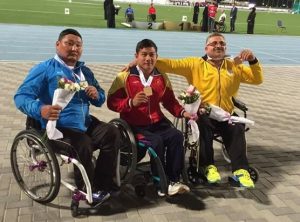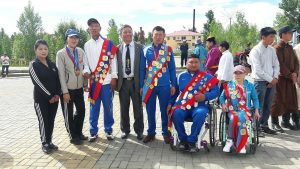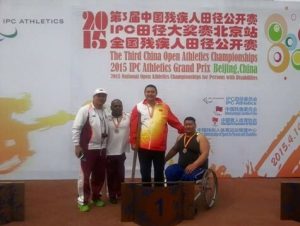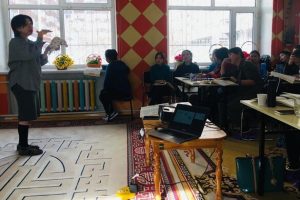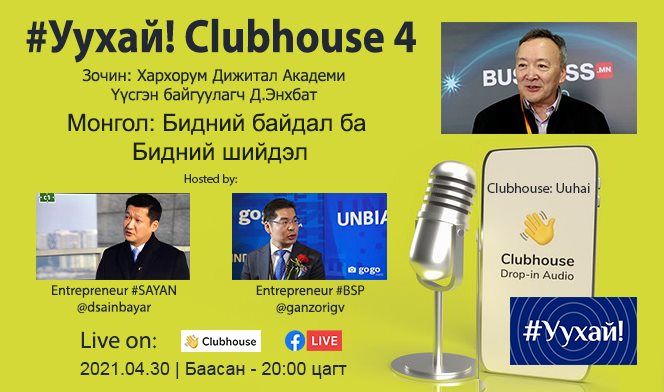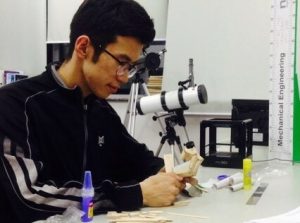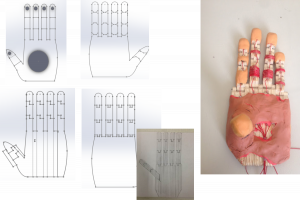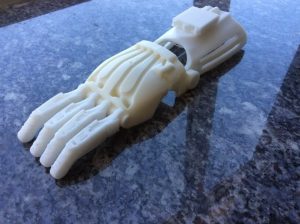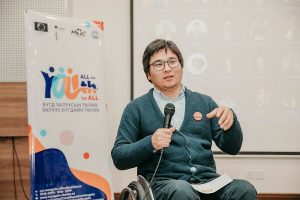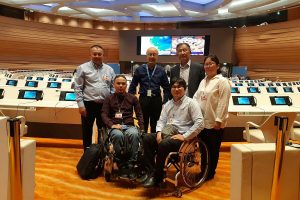By Bulgan B
The presidential election campaigning has ended officially on June 8 2021. The campaign lasted for ten days, and tomorrow, June 9th, we are likely to have a result or a likely decision on whether a second vote will be necessary as was the case in 2017.
Although late, I wanted to briefly survey each campaign platform on three main areas: Foreign Affairs and Military issues. According to the amendment to the constitution, the president would have a certain power in symbolic terms or executive terms (see article) over these three domains. Although judiciary is another area where previous President’s try to leverage power through appointments judges, prosecutors with the amendment to the constitution (Mongolia focus blogged extensively on it, please see here, and here for more information) the powers are restricted.
Before diving into the two categories, a short synopsis of the platforms is included below.
Right Person Electorate Coalition candidate D Enkhbat’s platform
Slogan/Motto: Do not include their campaign slogan. Their campaign slogan was “Mongolia can” – or “Mongolia is able” (See Marissa’s article for slogans for details and nuances).
General Summary: Compared to the other two candidates’ platforms, D Enkbat’s platform is only half as long, only seven pages. The platform includes a short introductory paragraph where it makes reference to Mongolia’s Sustainable Development Goals 2030. The platform continues with nine sections that are named as a declaration: [I] Shall be a President that:
- Enables unity, justice and equity.
- Protects national security and independence.
- Supports education policy that is based on sophisticated/developed systems and leading technology.
- Strengthens parliamentary democracy and human rights.
- Supports (pro) environment and sustainable development.
- Supports a sustainable economy that ensures innovation, free and healthy competition.
- Prioritizes national interests, and meets international standards, and respects foreign relations that are equal (balanced).
- Cherishes healthy Mongolians and Mongolian future.
- Rely on the citizen, not on any interest groups.
Democratic Party candidate S Erdene’s platform
Slogan/Motto: A country that respects individual rights – was the slogan for the platform. The campaign however used “Mongolia without Dictatorship” (see Marissa’s entry on slogans).
General Summary: The platform is 14 pages long, and has six sections. The introduction section includes references to “respecting the parliamentary governance”, “foreign policy that targets third neighbours” and reviving Democratic Mongolia. The intro section includes four bullet points declare to strengthen:
- Mongolia’s foundational/root interests,
- Mongolian’s human rights, and freedom,
- Private property and economic rights and
- Rule of law, and just government.
The six main sections are:
- National unity – Democratic governance
- Mongolian – Mongolian ethnos
- Foreign Relations – Neutrality policy
- Defence
- National Security
- Others
Mongolian People’s Party candidate U Khurelsukh’s platform
Slogan/Motto: The platform did not include its campaign slogan as part of the platform. U Khurelsukh’s campaign slogans are: “Owners of your wealth” and “Let’s serve/strive for Mongolia” (see Marissa’s article for more). However, each subsection had motto/slogans or vignettes included that are different than the general campaign slogans.
General Summary: The length of the platform was the same as S Erdene’s, 14 pages long. The platform is divided into three main sections and each section has three subsections. The main sections are 1. Justice, 3. Unity and 3. Development. Below are the sections/subsections.
- Justice includes 1.1. Responsible Government – Just society, 1.2. Inclusive economy (not quite the translation – Иргэндээ хүртээмжтэй эдийн засаг) – fair distribution (of wealth). 1.3. National heritage and values to cherish.
- Unity includes 2.1. National unity to prioritize and protect, 2.2. National foundational/root interests and security, 2.3. A foreign policy to lead us to development.
- The development includes 3.1. Mongolian – Mongolian wealth, 3.2. Green Development – Mongolian Future; 3.3. Rural and Urban – Developmental Balance (equity).
Candidates’ stand on Foreign Affairs issues
The powers of the president on foreign affairs are limited. Following three are the general areas of responsibility and rights:
- President holds power to represent Mongolia in foreign relations and can establish international contracts on behalf of Mongolia based on discussion with the parliament.
- President appoints and recalls ambassadors to other countries based on discussion with the parliament.
- President receives a letter of credence and recall of foreign heads of diplomatic missions.
Candidates have expressed their agenda on the first items – where they focus to improve relationships with the third neighbours and continue to respect the friendly relationships with the two neighbours.
The language/tone much differed between MPP ruling party candidate Khurelsukh and the other two candidates. U Kurelsukh’s language has not considered the limitations of the Presidential powers – and proposed implement activities. On the other hand, candidate D Enkhbat’s platform appeared general and S Erdene’s platform also struggled to remain within the established boundaries of the presidential powers.
D Enkhbat: Section 7. [I] shall be a President that prioritizes national interests, and meets international standards, and respects foreign relations that are equal (balanced).
Proposes to abide by the National Security Concept Paper as well as the Third Neighbour Policy and develop foreign relations policy that will support the joint implementation of big/mega projects. He also included friendly economic relations with the two neighbours China and Russia.
In terms of impact, will continue to advocate Mongolia as a centre for international dialogue, discussion and high-level meeting platform through active participation in the international community initiatives.
He includes that awareness and understanding of the existing economic structure, barriers, dependence and vulnerability and asserts that he will not tamper with the existing ecosystem (read the influence of China and Russia). At the same time, he proposes to focus on mitigating these challenges and improve immunity and support a self-relied economy.
Domestically, he proposes to improve public servant’s knowledge, skills and capacity in the foreign relations area.
S Erdene: Section 3. Foreign Relations – Neutrality policy
Also, continue to respect the two neighbours and will improve the relationship with the third neighbours. He mentions the USA, UK, Japan, EU, India, Korea and Turkey – as examples of countries that he would pursue to strengthen the third neighbour policy. Also, his platform proposes to improve the “strategic bilateral relations” to “comprehensive bilateral relations” with the USA and Japan.
On the two neighbours, the platform proposes that S. Erdene will hold a trilateral meeting of Russia, China and Mongolia in Ulaanbaatar – and will have a balanced, flexible and pragmatic policy in dealing with the neighbours.
Some specific action items included are:
-eliminate the Schengen visa for Mongolians by 2027;
-firmly support the goal of a peaceful solution to the Korean Peninsula issue and
-becoming an exporter to the Asian transport and energy networks (roads, airways, railways, etc.).;
-will work to have the parliament approve the initiatives on open/free zone to attract international investment in technology, industry and environment;
-work to include the participation of journalists in the peacekeeping missions;
-integrate into Asian transportation routes (road, railroad and air routes);
-one window policy for Economy and Foreign Relations;
-establish a new council foreign relations promotion (Гадаад харилцааны сурталчилгааны)under the President;
-work to open branches of international organizations, such as UN-affiliated organizations on human rights and education.
U Khurelsukh: Section 2.3. A foreign policy to lead us to development.
Similar to the other two candidates, the continued relationship with the two neighbours and improve outcomes from the engagement with the third neighbour. Compared to the other two candidates, the language shows the tone that I will get it done despite the fact that President’s power is limited.
He has specific sections on the international reputation of Mongolia, UN participation, foreign investment to help development, strong Mongolian passport (increase visa-free countries twofold), health diplomacy (pandemic related policy – nothing specific), cultural diplomacy and improving the capacity of the diplomatic missions as well as the officials.
Candidates’ stand on Military issues
The president is the Chief of the General Staff of the Mongolian Armed Forces and is the head of the National Security Council (Prime Minister and Speaker are members).
The powers that the president holds as the Chief of General Staff and Armed Forces raises certain concerns as it is a big power – and incumbent president Kh. Battulga and MPP candidate U Khurelsukh – directly and indirectly, make references to use the power of the military. Regarding the Head of the National Security Council – this is a consultative body – not an executive body.
D Enkhbat: Section 2 [I] Shall be a President that protects national security and independence.
Enkhbat made references to independence, territory and borders, unity, human rights, parliamentary democracy, corruption, ethics in the national security sections. There were two paragraphs (subsections) 2.6 and 2.7 explicitly referenced defence policy and defence sector, and reference to the armed forces is that he will work to support strategic, scientific and technologically enabled resources for the armed forces. On defence, he says he will continue to support the existing policy and will intensify the reform of the sector.
S Erdene: Section 4. Defence and Section 5. National Security
Section for 4. The candidate proposes that as the Chief of the Armed Forces – will initiate “Strong and Fast Army” and within the first 100-days in the office will implement “Military Police”. He will establish the International Centre of Peacekeeping in Mongolia, through it will attract investment to establish hospital engineering, infrastructure and advanced technology. In addition create student-soldier for professions in computing, mathematics and physics – to help with the non-traditional cyber units.
Followings are activities proposed in this section as well:
- establish a special unit (and its resources) to prevent cyber threats,
- implement policy to a couple professional army and citizen protection,
- improve modernize the conscripted soldiers program, and implement emergency management to military units;
- initiate a law that creates a body that prevents (and fights) and is able to respond to non-traditional security threats (pandemic, cyber attack, disinformation)
In section 5. National Security – The DP candidate included wide compassing issues, such development/maturity of political parties, party’s financial transparency, poverty, natural resource wealth distribution, energy, nomadic animal husbandry, climate change, water issues, bio-safety and reforming of the religious institutions.
As the head of the National Security Council – he proposes three agendas that include submitting law to reform the roles and responsibilities, reform emergency structure and response through a participatory process and will prevent the President to express personal positions that concern the issues of independence and foreign policy.
Another major piece under the section is on “Corruption” – that he declares corruption as the “enemy” that threatens national security and he proposes the five initiatives.
- Disclosure of income sources of the senior public servants;
- Initiate law that voters can withdraw MPs from the parliament if they deceived voters and lost voters trust;
- Enable a legal environment where senior officials violate existing laws and legislation that ensures transparency;
- Improve the system where the political party’s financial information is public through participatory hearing, discussion and process.
- Educate the anti-corruption body, and create a legal environment to separate the criminal functions.
U Khurelsukh: Section 2.2.National foundational/root interests and Security
On national security, U Khurelsukh proposed to implement “Mongolian citizen’s security/safety”, “Economic security” and “Pharmaceutical and food security” programs.
Also, he proposes to have a “National security integrated database” – to strengthen the government’s institutional memory.
On defence, the platform has two sections, 1. Armed forces with integrated management and 2. Mongolian soldier – peacekeeping soldier. The Armed forces with integrated management section involve further reforming the legislation of the military and create integrated management for armed forces and other administrative management. The improvement of the border units/regiments and national emergency

 Follow
Follow